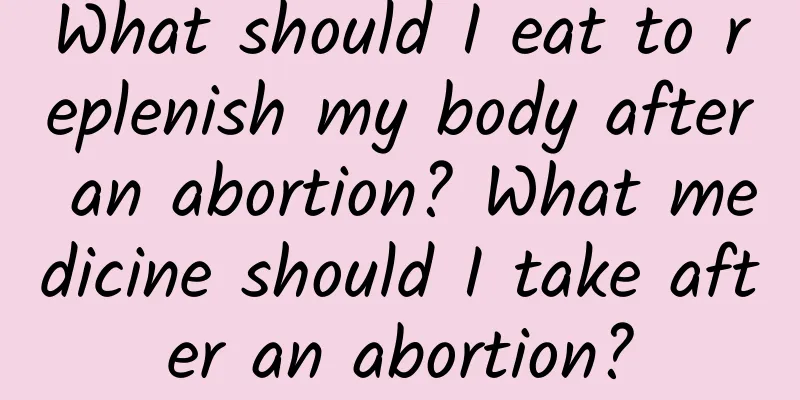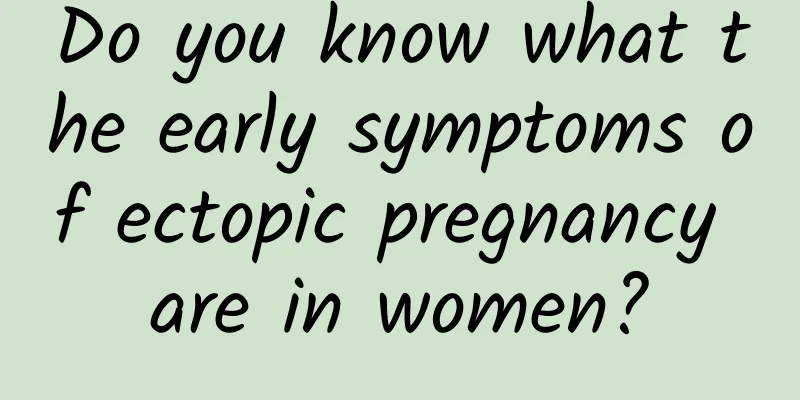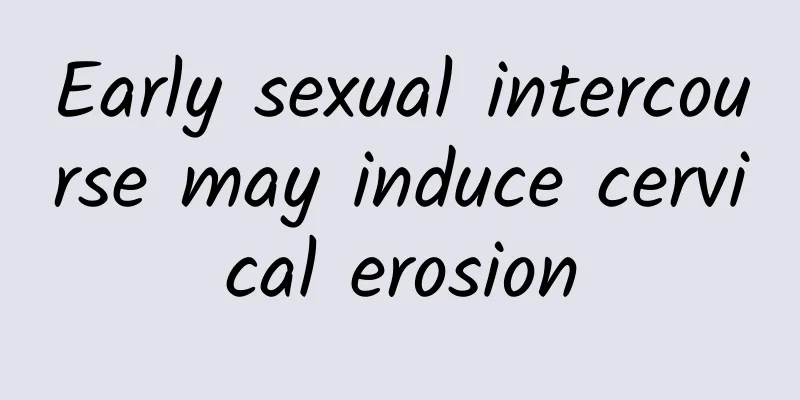What are the symptoms of early miscarriage?

|
In the early stages of pregnancy, the embryo is not very solid, and this is also the time when miscarriage is most likely to occur. Therefore, pregnant mothers should not take it lightly. If any signs of suspected miscarriage are found, they must go to a professional hospital's obstetrics department in time to ensure the safety of themselves and the fetus. So, what are the symptoms of early miscarriage? Let's take a look. Symptoms of miscarriage in early pregnancy: Threatened abortion: A small amount of vaginal bleeding occurs after menopause, often dark red or bloody leucorrhea, and no pregnancy material is discharged. Mild lower abdominal pain or lumbosacral pain may occur a few hours to a few days after bleeding. The cervix is not open, and the size of the uterus is consistent with the time of menopause. After rest and treatment, the symptoms disappear and the pregnancy can continue; if the symptoms worsen, it may develop into inevitable miscarriage. If the clinical symptoms worsen, B-type ultrasound finds that the embryo is poorly developed, and β-HCG continues to not rise or decrease, it indicates that miscarriage is inevitable and the pregnancy should be terminated. Inevitable miscarriage: Also known as inevitable miscarriage. On the basis of threatened miscarriage, vaginal bleeding increases, abdominal pain intensifies, or fetal membrane rupture occurs. Examination shows that the cervix has dilated, and sometimes the embryonic sac or embryonic tissue can be seen blocking the cervix. Once confirmed, the embryo and placental tissue should be expelled as soon as possible. If necessary, curettage should be performed to remove intrauterine tissue. Incomplete abortion: It is inevitable that the abortion will continue to develop, and part of the pregnancy product will be discharged from the uterine cavity, or the placenta will be retained in the uterine cavity or stuck in the cervix after the fetus is discharged, which will affect the contraction of the uterus, leading to heavy bleeding and even shock. Because some tissues remain in the uterine cavity or block the cervix, it is very easy to cause heavy uterine bleeding. Therefore, curettage or forceps curettage should be performed immediately while infusing or transfusing blood, and antibiotics should be given to prevent infection. Complete abortion: There are symptoms of abortion, the pregnancy products have all been expelled, and then the bleeding gradually stops and the abdominal pain gradually disappears. B-type ultrasound examination shows no residue in the uterine cavity. If there is no infection, no special treatment is required. Missed abortion: refers to the embryo that dies and stays in the uterus without being expelled. It is manifested by small amounts of vaginal bleeding, dark in color, and no abdominal pain. Because the embryo tissue is dry and sticks to the uterine wall, it is not easy to be expelled. Treatment is difficult and requires careful treatment and multiple curettage. The above is an introduction to the symptoms of early miscarriage. I hope it will be helpful to you. |
<<: What harm does abortion do to the body?
>>: What are the symptoms of early pregnancy miscarriage
Recommend
Typical symptoms of hyperplastic vulvar leukoplakia at different stages - do you know?
Experts analyze the symptoms of white spots on th...
The difference between adenomyosis and breast cancer
What is the difference between adenomyosis and br...
What are the clinical manifestations of vulvar leukoplakia?
Did you know that vulvar leukoplakia is closely r...
Can I still get pregnant with an ovarian cyst?
Can I still get pregnant with an ovarian cyst? 1....
Lack of sleep can also harm your skin! 4 must-eat nutrients to help you have a good night's sleep
Tossing and turning but can’t fall asleep? Long-t...
What are the common symptoms of ovarian cysts?
Many women panic and don't know what to do af...
Diabetic patients who do not want to rely on insulin use weight loss surgery
Currently, there are about 1.66 million people su...
Do core exercises at home to increase muscle strength and protect your lower back
[Key Points]: The core muscles are an important m...
What are the dangers of acute pelvic inflammatory disease
Acute pelvic inflammatory disease is more common ...
Can I eat passion fruit after a miscarriage? Choose fresh
Passion fruit is a kind of fruit, which is very n...
What can cause miscarriage? Eat less of these 5 foods
During the pregnancy, patients need to avoid cert...
Emotional problems may also cause menstrual irregularities
Irregular menstruation often occurs in women. Eac...
What is the difference between premature ovarian failure and polycystic ovary
What is the difference between premature ovarian ...
Gynecological examination is needed after menopause
Is it necessary to have a gynecological examinati...
Common symptoms of irregular menstruation
Irregular menstruation is a symptom of women'...









